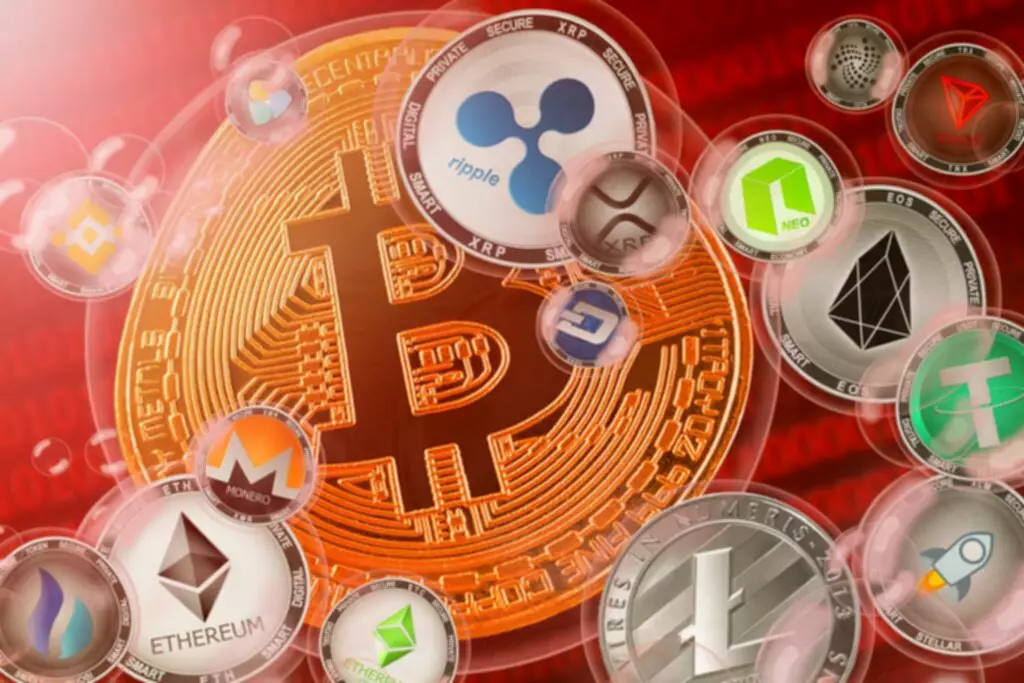Content
- Terra Goes Live With New Blockchain And Luna Airdrop
- Terra Classics Revival
- No, Terra Classic Isnt Going To $1 Heres Why
- Binances Bnb Chain Burns Another $772m In Tokens
- Lunc Burning Rate Shows 100% Result Against Last Week, Here’s How Much Gone
- Luna Classic Lunc Price Action
- Crypto Com’s Cro Doubles On Sudden Massive Burn News
Kim’s proposal puts forward an actionable path toward implementing the 1.2% burn tax on all on-chain transactions. In his post on the Terra Classic forums, he explains the possible pros and cons of such an update and invites discussion from other community members. In response, LUNC has hit a new local peak, trading at its highest since the May collapse. However, https://xcritical.com/ in many cases, burning tokens does little to impact actual supply and demand metrics. In the case of BNB, almost all of what’s burned comes from a reserve of tokens the exchange has held since launch. It makes for a good headline when Binance touts it has burned millions of dollars worth of BNB, but in reality, those tokens were never in circulation.

These early stakers now have fully-loaded bags ready to dump on new investors who are convinced Luna Classic’s upcoming token burn will shrink the supply and send it to a dollar. However, since Terra’s untimely collapse, efforts to revive the original blockchain have progressed slowly. In June, a proposal to start burning a portion of the Terra Classic transaction fees and increase validator rewards showed that there was still motivation to develop the chain despite it being abandoned by Terraform Labs. Another proposal to start burning 1.2% of all tokens transacted also passed a community vote, though details on how such an idea could be implemented were absent. Talk of implementing a 1.2% burn tax on all transactions has caused LUNC to soar more than 171% over the past week.
Terra Goes Live With New Blockchain And Luna Airdrop
Chris Williams tells the story of the blockchain and its controversial leader, Do Kwon. However, new investors should temper their expectations of the coin eventually hitting a dollar. Terra Classic is attempting to make another run at relevance, thanks to support from its community. Luna Classic is planning to implement a new 1.2% transaction tax burn mechanism.
Some or all of the information on this website may become outdated, or it may be or become incomplete or inaccurate. We may, but are not obligated to, update any outdated, what does burning tokens mean incomplete, or inaccurate information. The Terra Classic community is planning to start burning more LUNC—but traders should be careful they don’t get burned themselves.
Terra Classics Revival
But the latest efforts to revive the failed project may just be an elaborate pump and dump. After almost two weeks since the mass burning of the infamous LUNC began, the numbers of the cryptocurrency burns remain stable. In the seven days following the end of last week, the number of LUNC burned was approximately 7.2 billion coins. Based on the data of trade volumes, we can expect a decrease in LUNC burning volumes.
- It’s no coincidence that many of the most popular and widely adopted crypto projects incorporate a burn mechanic into their tokenomics.
- The blockchain went live with an airdrop of new LUNA tokens earlier this morning.
- But the latest efforts to revive the failed project may just be an elaborate pump and dump.
- In the case of BNB, almost all of what’s burned comes from a reserve of tokens the exchange has held since launch.
- He wants to have a hand in covering economic and fintech topics, as well as educate more people about cryptocurrencies and blockchain.
It’s not surprising, then, that such events have historically failed to impact BNB’s price. When the supply of something is reduced, but the demand stays the same, it follows that the price people are willing to pay will increase. It’s no coincidence that many of the most popular and widely adopted crypto projects incorporate a burn mechanic into their tokenomics. Shiba Inu’s developers routinely burn chunks of its supply, and Binance’s BNB also conducts quarterly token burns, much to the applause of holders. It’s also worth noting that since Terra Classic re-enabled staking earlier this year, large holders and validators have been taking advantage of its outsized staking rewards. Because few people have bothered delegating their LUNC to validators since the chain’s collapse, rewards are split between fewer people, resulting in an average annualized return of over 37%.
No, Terra Classic Isnt Going To $1 Heres Why
Thus, according to CoinMarketCap data, if on Monday, Oct. 3, the LUNC trading volume was equal to $913 million, by the end of the week its value gradually decreased to $250 million. When the main volume of burning accounts for the volume of trading commissions and the tax charged on trade, a drop in trading activity can have an unpleasant effect. What token burns do accomplish, though, is creating a strong narrative that even the most novice crypto investor can understand and get behind.

We strongly recommend that you consult a licensed investment advisor or other qualified financial professional if you are seeking investment advice on an ICO, IEO, or other investment. We do not accept compensation in any form for analyzing or reporting on any ICO, IEO, cryptocurrency, currency, tokenized sales, securities, or commodities. But what exactly does burning and taxing Luna Classic transactions hope to achieve?
Binances Bnb Chain Burns Another $772m In Tokens
In a separate blog post, the company said that the mainnet will be launched as the Crypto.org Chain with CRO as its native currency. “10.4 billion is currently locked in a smart contract and will be burned monthly, as it gets unlocked. This will increase the circulating supply of CRO from current 24% to over 80%,” they added. Particle B is a startup accelerator dedicated to incubating projects built on blockchains, including Bitcoin , Ethereum , and the Crypto.com Chain. Terra’s implosion will be remembered as one of the biggest moments in crypto history.
Deflationary crypto coins: Can value increase by burning? – Cryptopolitan
Deflationary crypto coins: Can value increase by burning?.
Posted: Sat, 17 Sep 2022 07:00:00 GMT [source]
These are just a couple of the questions the Terra Classic community needs to address in the lead-up to an event that could spark a significant amount of volatility. In addition, the number of coins burned by Binance should be known tomorrow, Oct. 10. Recall that after the first batch burned, almost 6 billion LUNC collected in the form of trading commissions were removed from the market. He wants to have a hand in covering economic and fintech topics, as well as educate more people about cryptocurrencies and blockchain.
Lunc Burning Rate Shows 100% Result Against Last Week, Here’s How Much Gone
The price of CRO, the native token of Crypto.com Chain, doubled in a few hours as Crypto.com said it will burn CRO 70bn as they’re preparing for the CRO Chain Mainnet launch on March 25. The blockchain went live with an airdrop of new LUNA tokens earlier this morning. BNB Chain, formerly known as Binance Smart Chain, has completed its quarterly auto-burn event for Q1, 2022, taking roughly $772 million worth of BNB tokens out of circulation.
It matters not whether a burn mechanism will significantly shrink a token’s supply and push prices up. By hyping up a token burn enough, the price will often rise anyway because people buy in anticipation of a perceived reduction in supply. When the UST stablecoin collapsed in May, many thought there was no hope left for Terra. Do Kwon, Terraform Labs’ infamous CEO, had quickly moved to establish a new Terra blockchain, relegating his failure to the name “Luna Classic” and rebranding the new chain’s native coin under the LUNA ticker.
Luna Classic Lunc Price Action
By burning a certain number of tokens in circulation, token burn initiators expect to increase the value of remaining coins. It adheres to the simple supply and demand principle – if the number of coins goes down and the need for them remains the same or grows, it should (but it’s not 100% guaranteed) experience gains in price. The most common way to burn coins is to send them to a so-called burner address – a public on-chain wallet whose private keys are verifiably invalid and unobtainable. Fast forward to today, and a recent proposal from Terra community member Edward Kim has helped reignite enthusiasm for Terra Classic.
For Daily Updates On What’s New And Interesting In Crypto
For Luna Classic, its planned token burn tax will likely do nothing more than create an excellent narrative to draw in naïve investors. The vast majority of LUNC trading occurs off-chain on centralized exchanges such as Binance, Kucoin, and Gate.io. That means even if the Terra Classic community successfully implemented a 1.2% burn tax on transactions, only a tiny fraction of LUNC would end up burned. While many members of the LUNC community have petitioned exchanges like Binance to implement their burn tax, it looks extremely unlikely that any will.

